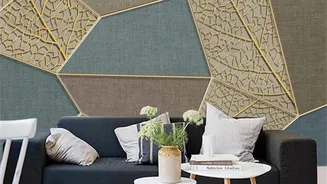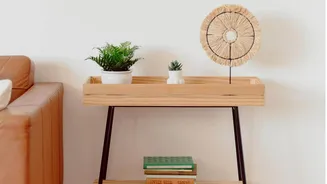Declutter and Organize
The initial step in any home makeover should always be decluttering. Begin by thoroughly assessing each room and eliminating items that are no longer needed,
used, or loved. This could involve discarding broken items, donating gently used goods, or simply relocating things that don't belong where they are. Once the unnecessary items are removed, focus on organizing what remains. Consider investing in storage solutions such as baskets, shelves, and containers to tidy up clutter. Ensure that every item has its dedicated place to make tidying up a breeze. Consider categorizing belongings to make them easier to find and keep track of, for example, storing books together, clothes in another, and so on. A well-organized space not only looks cleaner but also provides a sense of calm and clarity.
Rearrange Your Furniture
A simple furniture rearrangement can completely transform a room. Try experimenting with different layouts to find the best flow and functionality. For instance, in the living room, pull furniture away from the walls to create a more intimate and conversational setting. In the dining area, consider positioning the table near a window for natural light. Don’t hesitate to move pieces around until you discover an arrangement that feels right. Consider the function of each room. Ensure adequate space for walking and moving around the furniture. If you have rugs, reposition them under your furniture to anchor the space and define zones. Playing with the positioning of furniture is a cost-effective and immediate way to revamp your home.
Refresh With Colors
Colors can greatly impact the mood of a space. Painting a wall, adding colorful throw pillows, or incorporating vibrant artwork can make your home feel fresher. Select colors that match the style of your home. For a sense of calmness and relaxation, consider using soft, neutral colors in your bedroom and living areas. For an energetic and lively vibe, experiment with brighter hues in areas like your home office or kitchen. Do not be afraid to incorporate accent colors to complement your primary color scheme, which can be done through the use of rugs, throws, or decorative accents. You can try a bold accent wall to add a pop of color without overwhelming the space. Be mindful that colors greatly influence the atmosphere in the rooms, so select them wisely.
Enhance Lighting Elements
Good lighting can considerably improve a room's appearance. Incorporate a mix of natural and artificial lighting to create a warm and inviting atmosphere. Maximize natural light by keeping windows clean and minimizing obstructions like heavy curtains. For artificial lighting, add different sources, such as ambient lighting, task lighting, and accent lighting. Consider installing dimmer switches to regulate lighting levels depending on the occasion. Try using table lamps and floor lamps to add warmth and create focal points. Pendant lights can be used above dining tables or kitchen islands to add both style and functionality. Ensure the light fixtures complement the room's overall aesthetic and serve their intended purpose effectively.
Add Decorative Accents
Decorative accents are ideal for expressing your personal style and injecting character into your home. Adding small décor items, such as vases, picture frames, or candles, can make the space feel more curated. Place mirrors strategically to enhance space and light, or add artwork to introduce personality. Introduce elements of nature such as plants or flowers, which add freshness and life. Choose accents that coordinate with your existing décor. Mix textures and patterns thoughtfully to create visual interest, but avoid overcrowding the space. Regularly swap out accents to keep your space feeling fresh. Small changes can have a huge impact on making your home look more polished.
Focus on Textiles
Textiles can instantly change the feel of a room. New curtains, throw pillows, blankets, or rugs can create an instant makeover. Pick curtains that complement the wall color. Use cozy blankets and throw pillows on sofas and chairs to make them more inviting. Select rugs that are the appropriate size and color for each space. Choose fabrics that feel pleasant to the touch and that are easy to care for. In high-traffic areas, opt for durable, stain-resistant materials. Change the textiles to match the seasons or the changes in the mood. These simple additions can introduce texture, pattern, and color, adding layers of comfort and style to your home.











